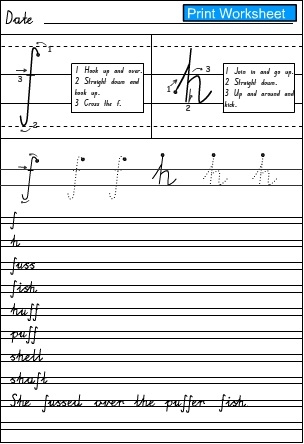Letters f and h: using joins (Letters f and h)
- Grade: Grade 4
Activity type: Printable
To save results or sets tasks for your students you need to be logged in. Join Now, Free
Letters f and h: using joins (Letters f and h)
- Course
English - Grade
Grade 4 - Section
Handwriting - Outcome
Clockwise, Anticlockwise Movement; f, h, e, s - Activity Type
Printable - Activity ID
4797

